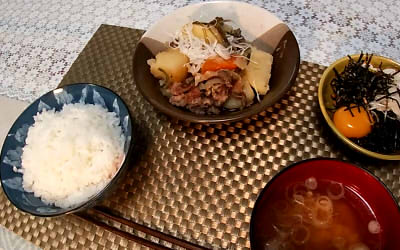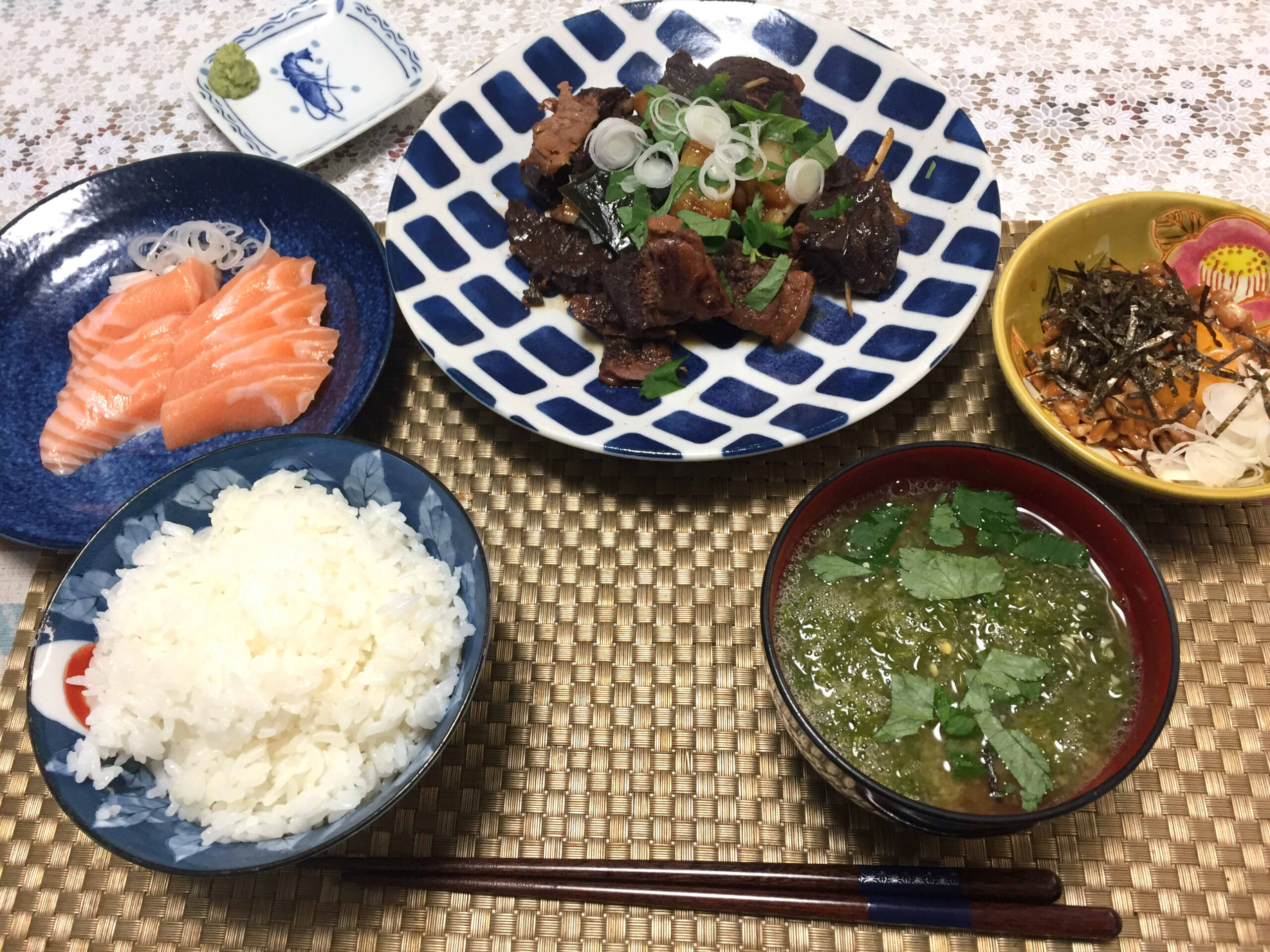Japanese people rarely stop to analyze this, but white rice—known as gohan—plays a surprisingly complex and essential role in traditional meals.
Gohan as a Nutritional Anchor in Meal Planning

Each component in a Japanese meal set
White rice is often seen as a simple energy source, like fuel for a car. It’s high in glycemic index (GI), meaning it raises blood sugar quickly—something that Western nutrition often warns against. But in reality, gohan is deeply effective at satisfying hunger, which is a more primal and powerful factor than any nutritional theory.
Because rice is consistent—cooked the same way, portioned intuitively—Japanese people can focus their attention on the okazu (side dishes) to balance nutrition, flavor, and variety. This leads to a natural formula: Gohan (fuel) + Okazu (balanced variety) = a complete and satisfying meal.
Gohan as a Taste Balancer While Eating
In Japanese meals, rice and side dishes are eaten together in one bite. This pairing is similar to how bread complements other foods—but rice does it in a more subtle and powerful way.
Since white rice is cooked with just water and has a neutral flavor, it acts like a “white canvas” that enhances the taste of each okazu. Just as white makes other colors stand out visually, gohan makes flavors more distinct. This explains why even the simplest combinations—like rice with natto or tsukemono—can feel complete and beautiful. The simplicity is intentional: it celebrates the purity of white rice as the central element.
Gohan as a Sensory and Aesthetic Foundation
Think of digital painting tools: pure white is rarely used directly because it’s too bright and clashes with other colors. Instead, artists adjust brightness and tone to make colors harmonize.
White rice in Japanese meals works similarly. Its texture, moisture, and mild taste are already “tuned” to suit the human palate. This means that okazu dishes are often designed to complement rice—balancing oiliness, saltiness, and richness. This dynamic leads to naturally balanced meal sets and helps explain why traditional Japanese meals are often considered healthy.

Standard Japanese meal set: Nikujaga
Western Nutrition vs. Japanese Practice
Western nutrition tends to focus on the drawbacks of white rice—high carbs, blood sugar spikes, etc. But in countries like Japan, where rice is the staple grain, these concerns are rarely emphasized. Instead, rice is seen as a cultural and practical foundation for everyday meals.
Economic and Cultural Contexts Behind Grain Preferences
Grain popularity is often shaped by a country’s agricultural economy. In rice-producing nations like Japan, rice is deeply embedded in daily life and rarely questioned. This context matters when evaluating nutritional advice across cultures.
Final Thoughts
As Japanese cuisine gains popularity worldwide, understanding the deeper role of gohan can offer fresh insights into meal planning and flavor design. Try approaching Japanese dishes with this perspective—you might discover a new appreciation for simplicity, balance, and the quiet power of white rice.
← Home | Previous Article

Leave a Reply